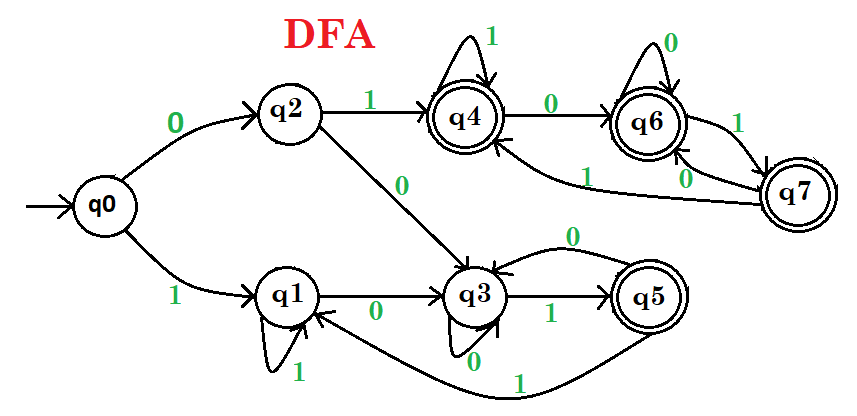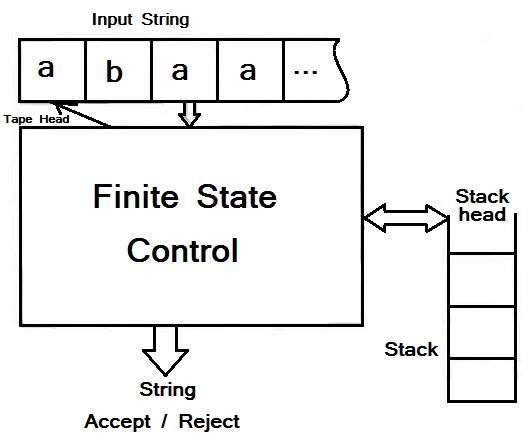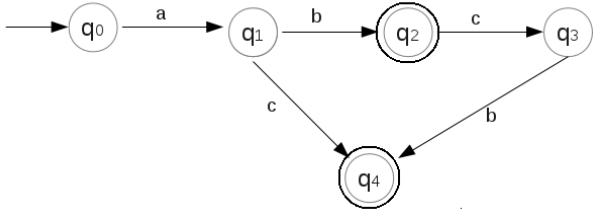Automata finite dfa geeksforgeeks state initial string
Table of Contents
Table of Contents
In the world of computer science, automata theory is a fundamental concept that describes the behavior and operation of specific systems. Among the most used types of automata is the finite automata, which is widely used for data processing and prediction in various computer applications. However, drawing finite automata diagrams can be challenging and requires specific knowledge and skills. In this post, we will explore the process of how to draw finite automata diagrams in en_us language, covering the main concepts, steps, and best practices.
If you have ever tried to draw a finite automata diagram, you know how confusing the process can be. The task requires attention to detail, the ability to understand and visualize complex relationships, and patience. Often, computer science students struggle with creating an accurate and visually appealing finite automata diagram, which can affect their performance in assignments and exams.
The process of how to draw finite automata diagram starts with identifying the language that the automata describes. A finite automata describes a set of strings that are either accepted or rejected by the machine. After identifying the language, you can create a transition diagram with states indicating the status of the machine after reading a particular input.
In summary, the process of how to draw finite automata diagrams requires identifying the language, creating a transition diagram, and defining the final and start states. Additionally, best practices such as using clear and concise labeling, organizing the diagram, and avoiding ambiguity can help create visually appealing and accurate finite automata diagrams.
Why is Understanding How to Draw Finite Automata Diagram Important?
Finite automata diagrams are essential in describing the behavior of specific systems in computer science. Understanding how to draw finite automata diagrams is fundamental to predicting or analyzing the outcomes of problem instances in computer applications. Finite automata is used to analyze natural language processing, compilers, and pattern recognition, and as such, having a solid foundation in creating accurate and visually appealing diagrams is essential.
Automata Theory and Its Contribution to Finite Automata Diagrams
Fundamental concepts in automata theory provide significant influence over the creation of finite automata diagrams. For example, the concept of a formal language, which denotes the set of all possible strings in a particular problem, is essential in creating the transition diagram. Also, the definition of a finite automata machine, which is defined as a collection of states, an input alphabet, a transition function, a start state, and a final state, is critical to creating an accurate diagram.
The Main Steps in Drawing Finite Automata Diagram
The process of creating finite automata diagrams can be broken down into several main steps:
- Identifying the language
- Creating a transition diagram
- Defining the final and start states
- Organizing the diagram visually
- Labelling the diagram clearly and concisely
Identifying the Language
The language denotes the set of all possible strings in a particular problem. Therefore, the first step in creating a finite automata diagram is identifying the language. The language determines the symbols and characters that will be used in the creation of the transition diagram.
Creating a Transition Diagram
After identifying the language, the next step is to create a transition diagram. The transition diagram is a graphical representation of the finite automata machine, consisting of states that indicate the status of the machine after reading a particular input. The transition diagram also shows the transition function, which represents the target state that the machine will transition to after reading a particular input.
Defining the Final and Start States
The final state is where the finite automata machine stops after reading a particular input. The start state is the initial state of the machine. Defining the final and start states enables you to complete the transition diagram and create a more accurate representation of the finite automata machine.
Organizing the Diagram Visually
Organizing the diagram visually is critical to creating an accurate and efficient finite automata diagram. Properly placed nodes, clearly labeled arrows, and well-organized spacing can help differentiate between different states and help organize the diagram in a visually appealing way.
Labeling the Diagram Clearly and Concisely
Clear and concise labeling is an essential aspect of creating an accurate and useful finite automata diagram. Proper labeling involves ensuring that the diagram’s nodes, arrows, and states are clearly marked and appropriately named. Well-labeled diagrams can make it easier to understand the behavior of the finite automaton machine and analyze its outcomes.
How to Draw Finite Automata Diagram in En_US Language
Understanding how to draw finite automata diagrams is crucial to computer science students’ academic success. The process of drawing accurate and visually appealing diagrams requires specific knowledge and skills. The following step-by-step guide provides a helpful framework for creating finite automata diagrams in the en_US language:
- Identify the language
- Draw nodes for each state
- Determine the start state and final state(s)
- Draw arrows between the nodes based on input values
- Label the arrows with input values
- Designate accept/reject state(s) as double circles/single circles
- Review the diagram and ensure that the diagram accurately represents the finite automata machine.
Overall, creating finite automata diagrams requires a combination of critical thinking and accurate graphical representation skills. The tips above provide essential guidance for computer science students who need to create finite automata diagrams in en_us language.
Question and Answer
Q. What is a finite automata machine?
A. A finite automata machine is defined as a limited set of states, an input alphabet, a transition function, a start state, and a final state.
Q. Why are finite automata diagrams essential in computer science?
A. Finite automata diagrams are essential in computer science because they help describe the behavior of specific systems and applications. They are useful in analyzing natural language processing, compilers, and pattern recognition.
Q. What is the importance of labeling a finite automata diagram?
A. Clear and concise labeling of a finite automata diagram is essential because it helps differentiate between different states and make it easier to understand the behavior of the finite automata machine and analyze its outcomes.
Q. How can organizing the diagram help in creating an accurate finite automata diagram?
A. Organizing the diagram visually is critical to creating an accurate and efficient finite automata diagram. Properly placed nodes, clearly labeled arrows, and well-organized spacing can help differentiate between different states, transitions, and help organize the graph in a visually appealing way.
Conclusion of How to Draw Finite Automata Diagram
The process of how to draw finite automata diagram is an essential skill for computer science students. It involves identifying the problem’s language, creating a graphical representation of the finite automata machine, and labeling the diagram’s elements clearly and concisely. Best practices such as properly organizing the diagram, avoiding ambiguity, and following the tips provided above can help create visually appealing and accurate finite automata diagrams. Following the instructions laid out in this post should provide a solid foundation for creating finite automata diagrams in en_US language.
Gallery
Finite Automata - Theory Of Computation Computer Science Engineering
Photo Credit by: bing.com / finite automata theory computation transition automation diagram edurev table representation called above
Deterministic Finite Automata ( DFA ) With (Type 1: Strings Ending With

Photo Credit by: bing.com / automata finite dfa examples deterministic ending
Structural Representation Of Automata | Block Diagram Of Finite Automata

Photo Credit by: bing.com / automata finite structural diagram block representation input tape control
Practice Problems On Finite Automata | Set 2 - GeeksforGeeks

Photo Credit by: bing.com / automata finite dfa geeksforgeeks state initial string
Pushdown Automata Definition: Formal And Informal | Engineer’s Portal

Photo Credit by: bing.com / automata pushdown informal concurrent frameworks






